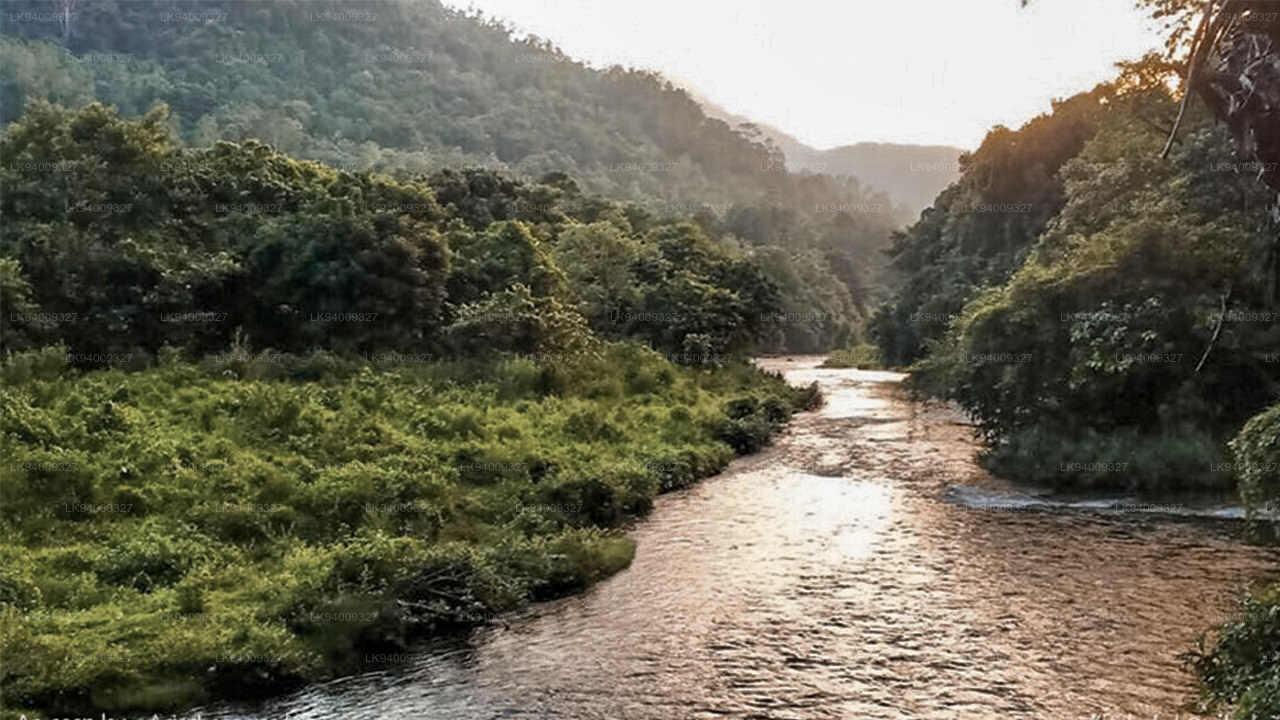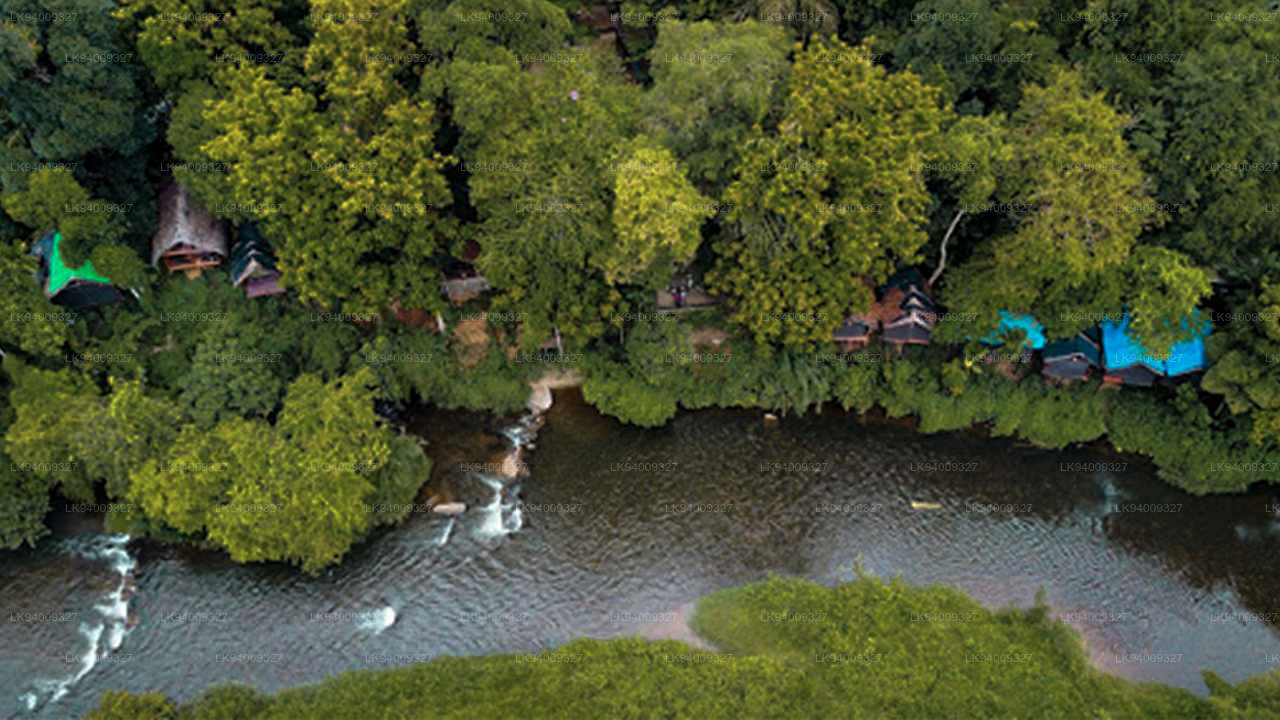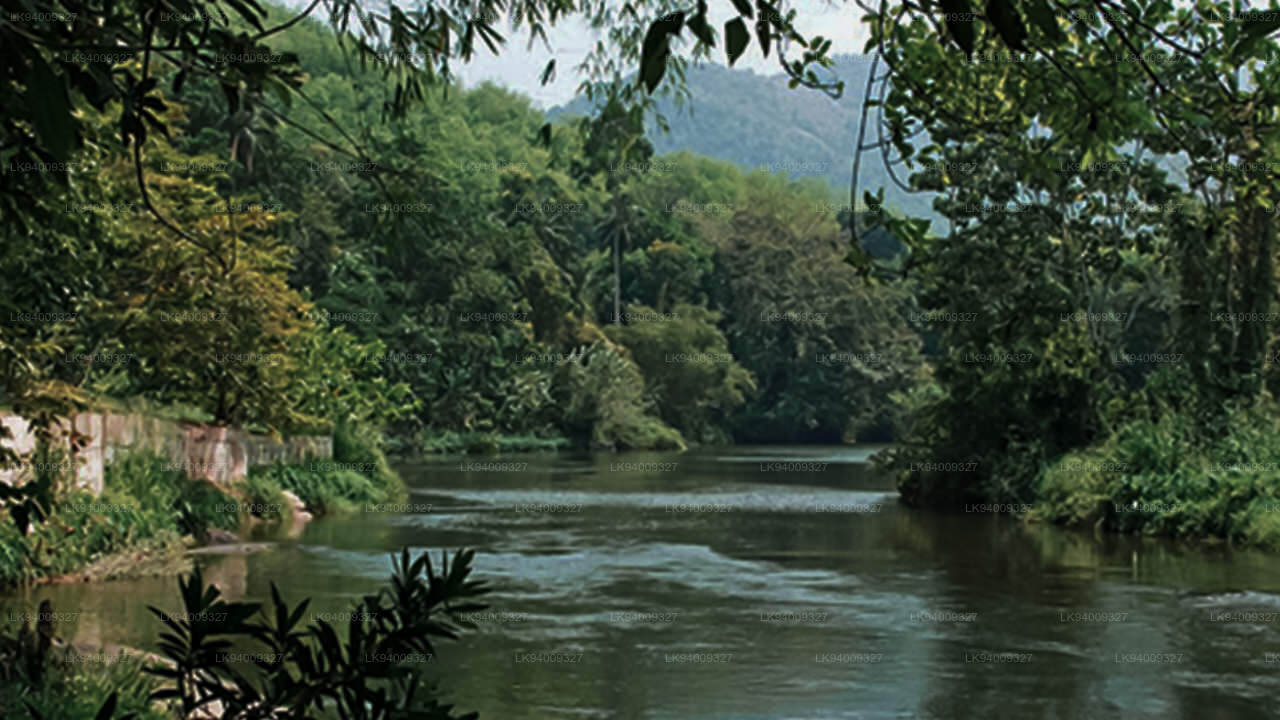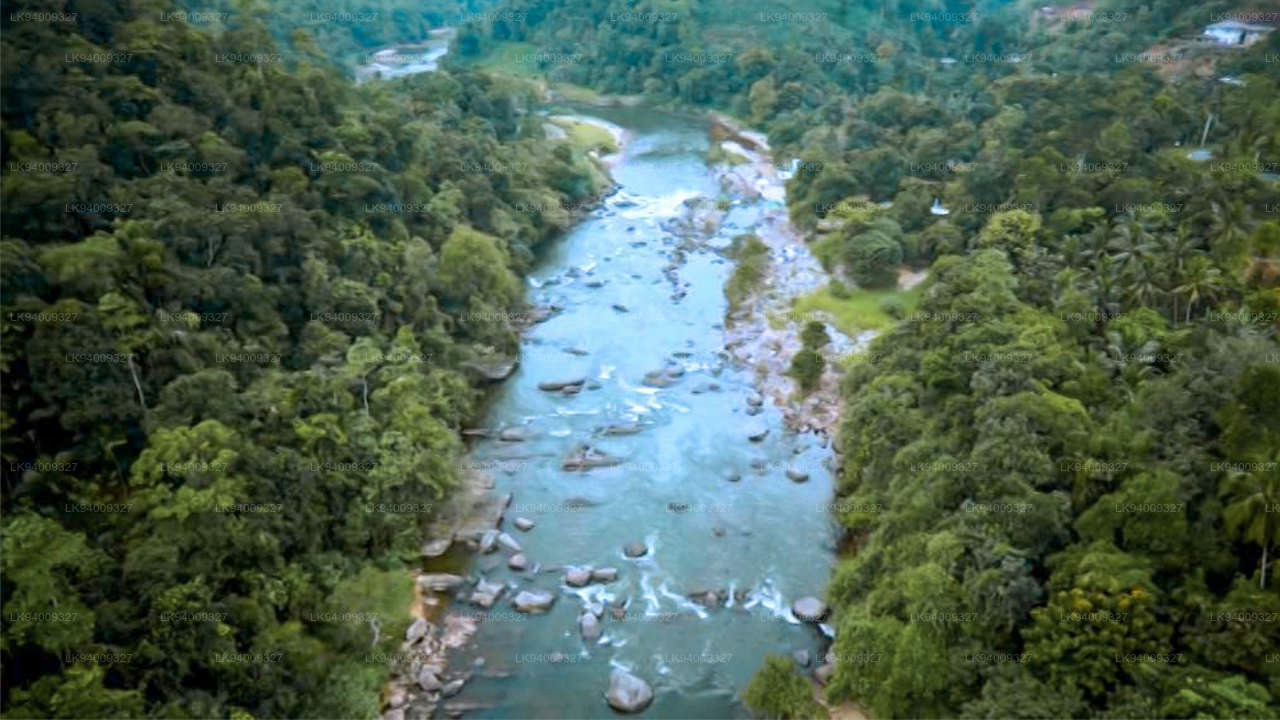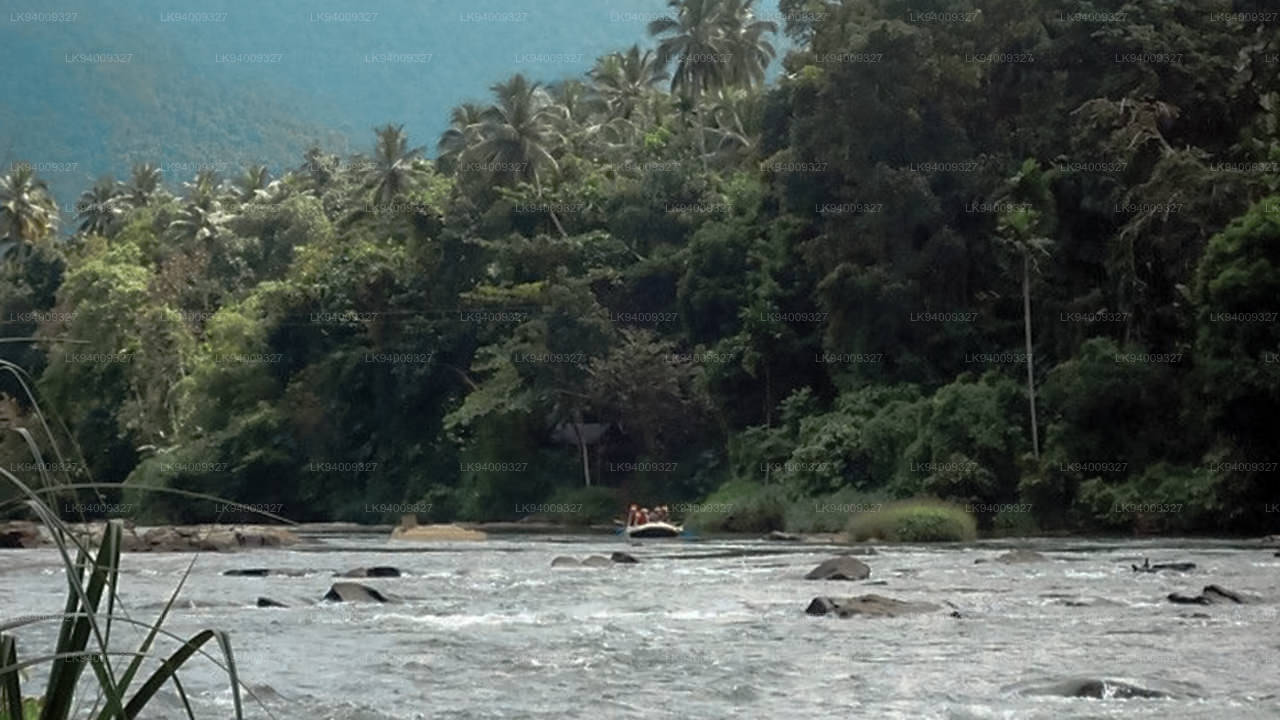
Rivers
The rich network of rivers in Sri Lanka make the island an oasis at any time of year, naturally watering the paradise garden with its splendid heritage. The highest concentration of rivers and lakes is found in the south-west of the country, making it possibly the most fertile area in Sri Lanka.
Kelani River (කැලණි ගඟ)
The Kelani River is a 145-kilometre-long (90 mi) river in Sri Lanka. Ranking as the fourth-longest river in the country, it stretches from the Sri Pada Mountain Range to Colombo. It flows through or borders the Sri Lankan districts of Nuwara Eliya, Ratnapura, Kegalle, Gampaha and Colombo. The Kelani River also flows through the capital of Sri Lanka, Colombo, and provides 80% of its drinking water. The Kelani River has two main tributaries in its upper reaches: the Kehelgamu Oya and the Maskeli Oya. These two contribute to hydro-electric production in Sri Lanka, housing several major reservoirs, ponds and power stations. Castlereigh Reservoir and Norton Reservoir are constructed across the Kehelgamu Oya, while Maskeliya Reservoir, Canyon Reservoir and Laxapana Reservoir are constructed across the Maskeli Oya. In its lower reaches, some more tributaries connect to the Kelani River, out of which the most famous are the We Oya at Yatiyanthota, the Gurugoda Oya at Ruwanwella, and the Seethawaka Ganga at Avissawella.
The Kelani supplies approximately 80% of the water used in Colombo. In addition, the river is used for transport, fisheries,sand mining and for production of hydroelectricity. Through these factors, many people depend on the river for their daily routine in life. At present, two main concerns in connection with the river are flooding during the monsoon and saline intrusion in the dry season. In addition, Kelani River water levels affect the flood risk to Colombo, capital of Sri Lanka, to a considerable extent. One reason is that part of the city and suburbs of Colombo lie on the lower flood plain of the river. Exposure of Colombo and the upper catchments of Kelani River to the South West Monsoon is another reason.
The problems are related: the saline intrusion is enhanced by the deepening of the river caused by the sand mining. Regulation in order to prevent the saline intrusion can reduce the water quality in other ways, and can increase the flood risk. Sand mining is economically important nationally and to the many people involved. Kelani River is connected closely with the Sinhala Buddhist culture of Sri Lanka, especially with the people living on the area identified as the Kelani Valley. This derives primarily from the fact that the Kelani River is associated with two of the most venerated Buddhist shrines and pilgrimages, i.e. Sri Pada Mountain and Kelani Raja Maha Viharaya.
-
 Malwathu Oya (මල්වතු ඔය)
Malwathu Oya (මල්වතු ඔය)The Malvathu River long river in Sri Lanka, connecting the city of Anuradhapura, which was the capital of the country for over 15 centuries, to the coast of Mannar. It currently ranks as the second longest river in the country, with a great historic significance.
-
 Kelani River (කැලණි ගඟ)
Kelani River (කැලණි ගඟ)The Kelani River is a 145-kilometre-long (90 mi) river in Sri Lanka. Ranking as the fourth-longest river in the country, it stretches from the Sri Pada Mountain Range to Colombo. It flows through or borders the Sri Lankan districts of Nuwara Eliya, Ratnapura, Kegalle, Gampaha and Colombo.
-
 Yan Oya (යාන් ඔය)
Yan Oya (යාන් ඔය)The Yan Oya is the fifth-longest river of Sri Lanka. It measures approximately 142 km (88 mi) in length. Its catchment area receives approximately 2,371 million cubic metres of rain per year, and approximately 17 percent of the water reaches the sea. It has a catchment area of 1,520 square kilometres.
-
 Walawe River (වලවේ ගඟ)
Walawe River (වලවේ ගඟ)The southern region of Sri Lanka is exalted by a bushel of enthralling and glorified rivers and the Walawe River is one of them. Gently flowing through the Udawalawe National Park, the Walawe River provides water for a multitude of species of mesmerising fauna.
-
 Kalu Ganga (කළු ගඟ)
Kalu Ganga (කළු ගඟ)Kalu Ganga is a river in Sri Lanka. Measuring 129 km (80 mi) in length, the river originates from Sri Padhaya and reach the sea at Kalutara. The Black River flows through the Ratnapura and the Kalutara District and pass the city Ratnapura. The mountainous forests in the Central Province and the Sinharaja Forest Reserve are the main sources of water for the river.
-
 Maha Oya (මහ ඔය)
Maha Oya (මහ ඔය)The Maha Oya is a major stream in the Sabaragamuwa Province of Sri Lanka. It measures approximately 134 km (83 mi) in length. It runs across four provinces and five districts. Maha Oya has 14 Water supply networks to serve the need of water and more than 1 million people live by the river.
-
 Gin Ganga (ගිං ගඟ)
Gin Ganga (ගිං ගඟ)The Gin Ganga, is a 115.9 km (72 mi) long river situated in Galle District of Sri Lanka. The river's headwaters are located in the Gongala Mountain range, near Deniyaya, bordering the Sinharaja Forest Reserve.
-
 Kala Oya (කලා ඔය)
Kala Oya (කලා ඔය)It was around these ancient tank (water storage reservoir) irrigation systems that the economy and human settlements of early Sri Lankan society were organised into a “hydraulic civilization”.
-
 Deduru Oya (දැදුරු ඔය)
Deduru Oya (දැදුරු ඔය)The Deduru Oya Dam is an embankment dam built across the Deduru River in Kurunegala District of Sri Lanka. Built in 2014, the primary purpose of the dam is to retain approximately a billion cubic metres of water for irrigation purposes, which would otherwise flow out to sea.
-
 Maduru Oya (මාදුරු ඔය)
Maduru Oya (මාදුරු ඔය)The Maduru Oya is a major stream in the North Central Province of Sri Lanka. It is approximately 135 km (84 mi) in length. Its catchment area receives approximately 3,060 million cubic metres of rain per year, and approximately 26 percent of the water reaches the sea.
-
 Kumbukkan Oya (කුඹුක්කන් ඔය)
Kumbukkan Oya (කුඹුක්කන් ඔය)The Kumbukkan Oya is the twelfth-longest river of Sri Lanka. It is approximately 116 km (72 mi) long. It runs across two provinces and two districts. Its catchment area receives approximately 2,115 million cubic metres of rain per year, and approximately 12 percent of the water reaches the sea.
-
 Mi Oya (මී ඔය)
Mi Oya (මී ඔය)The Mi oya is a 108 km (67 mi) long river, in North Western of Sri Lanka. It is the fifteenth-longest river in Sri Lanka. It begins in Saliyagama and flows northwest, emptying into the Indian Ocean thru Puttalam.

